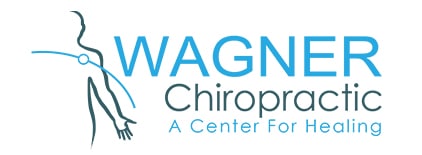Real Hope for Persons with Brain Injury, Concussion or Memory Problems

Neuroplasticity refers to the brain’s ability to form and reorganize synaptic connections(1) especially in response to learning or experience or following an injury. Neuroplasticity is an adaptive process in which nerve cells in the brain compensate for injury, damage and loss of function. Neuroscience now views the brain and its neural circuits as malleable (plastic), capable of adjusting and metamorphosing throughout one’s lifetime. The fact that neuroplasticity exists offers real hope to everyone from stroke victims, concussion syndrome, and mild traumatic brain injuries. The concept of neuroplasticity is fairly new, but it is one of the most important discoveries in neuroscience.
“Neuroplasticity is the brain’s amazing capacity to change and adapt. It refers to the physiological changes in the brain that happen as the result of our interactions with our environment. From the time the brain begins to develop in utero until the day we die, the connections among the cells in our brains reorganize in response to our changing needs. This dynamic process allows us to learn from and adapt to different experiences.”
- DR. CELESTE CAMPBELL, NEUROPSYCHOLOGIST, POLYTRAUMA PROGRAM, WASHINGTON, D. C. VETERANS ADMINISTRATION MEDICAL CENTER
To illustrate what is possible in neuroplasticity, brain research on Tibetan buddhist monks conducted at the Waisman Laboratory for Brain Imaging and Behavior at the University of Wisconsin–Madison provides stunning conclusions. The findings strongly suggest that over the course of meditating for tens of thousands of hours these long-term practitioners of meditation have actually altered the structure and function of their brains.
Neuroplasticity is not only a factor in recovery from brain injuries. In fact, it is actually the foundation for a great deal of cognitive and physical rehabilitation practices. In rehabilitation, a patient is aimed at “re-wiring” the brain by rebuilding connections among the nerve cells (neurons) making it possible for a function that was previously managed by the damaged area of the brain to be taken over by another undamaged area. For example, original thinking was that each brain hemisphere has its own tasks, however we are finding that if one brain hemisphere is damaged, the intact hemisphere is often able to take over some of the functions of the damaged one. The brain’s neurons are resiliently and infinitely receptive to this type of change and expansion.
Neuroplasticity plays a significant functional and ameliorative role across a wide spectrum of brain diseases such as:
- central nervous system/spinal cord injury/stroke/trauma
- neuropsychiatric disorders
- mental/addictive disorders
- pediatric/developmental disorders
- neurodegeneration/aging
In addition to the obvious physical component in brain healing, emotional, psychological, and lifestyle components are very important to not only consider but include in a healing strategy for persons with a brain injury or condition. It makes sense that a multidisciplinary approach presents the best way to support the brain to perform its own internal healing. At Wagner Chiropractic in Eustis, we offer a holistic multidisciplinary approach that includes chiropractic care, physical rehabilitation, and nutritional, exercise and lifestyle counseling.
An important component of the chiropractic care we offer our patients with brain injury or conditions is chiropractic adjustment.
“Recently, chiropractic has also become a subject of discussion among researchers studying neuroplasticity. Juxtaposition of spine health and mental fortitude have opened the door for investigation into just how important spinal alignment is in maintaining mental faculties… maintaining ideal spine health and posture does more for the mind and body than living with misalignment, subluxations(4), or deteriorating posture.”
- IMPROVING NEUROPLASTICITY THROUGH CHIROPRACTIC ADJUSTMENTS, CHIROPRACTIC BIOPHYSICS
The spine houses essential nerve bundles and lymphatic delivery systems whose mission it is to feed the brain therefore playing a vital role in maintaining brain function. Nerve bundles originating in the cervical spine carry messages to and from the brain making both unconscious and complex functions happen. Good blood circulation facilitated by chiropractic adjustment provides the brain with oxygen, amino acids, electrolytes and hormones so necessary for the entire body’s optimum function.
When the spine shifts out of ideal alignment, the nerves and lymphatic delivery systems become stressed and the longer these systems are compromised without proper adjustment, the more they deprive the brain of its vital messages and nutrients. In the short term, migraine headaches, mental fog, lethargy, and vision problems may be the result. In the long term, the brain can become severely affected even possibly causing negative neuroplasticity.
At Wagner Chiropractic we naturally embrace the opportunity to assist patients with brain injuries and conditions of many types. We are dedicated to providing all the means at our disposal to support neuroplasticity in many of our patients. Through non-invasive, non-pharmacological means, we are gratified to be able to constantly realize a much greater quality of life in our patients with brain conditions.
- a junction between two nerve cells, consisting of a minute gap across which impulses pass by diffusion of a neurotransmitter (2).
- (2) a chemical substance that is released at the end of a nerve fiber by the arrival of a nerve impulse and, by diffusing across the synapse or junction, causes the transfer of the impulse to another nerve fiber, a muscle fiber, or some other structure.
- (3) a partial dislocation or misalignment of the vertebrae, regarded in chiropractic theory as the cause of many health problems
Endnotes:
“Buddha’s Brain: Neuroplasticity and Meditation.” Health and Human Services Public Access Author Manuscript. U.S. National Library of Medicine, 25 Nov. 2011, https://www.ncbi.nlm.nih.gov/pmc/articles/PMC2944261
“Harnessing neuroplasticity for clinical applications.” Brain: A Journal of Neurology. U.S. National Library of Medicine, 9 April. 2011, https://www.ncbi.nlm.nih.gov/pmc/articles/PMC3102236
“Improving Neuroplasticity Through Chiropractic Adjustments.” Chiropractic BioPhysics, IdealSpine, 31 Oct. 2017, idealspine.com/improving-neuroplasticity-through-chiropractic-adjustments/.
OFFICE HOURS
Monday
7:15am - 4:30pm
Tuesday
7:15am - 4:30pm
Wednesday
Closed
Thursday
7:15am - 4:30pm
Friday
7:15am - 3:30pm
Saturday
Closed
Wagner Chiropractic
2775 South Bay Street
Eustis, FL 32726
(352) 589-5443



